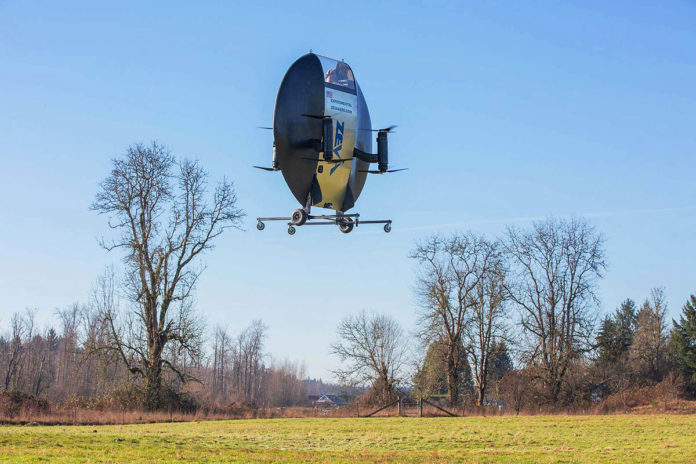ZEVA Aero has successfully achieved its first untethered, powered, controlled flight test for its full-scale ZEVA ZERO flying wing airframe utilizing its eight zero-emission electric motor-driven propellers.
The uncrewed ZEVA demonstration aircraft completed four flights, totaling more than four flights, totaling more than four minutes of controlled hovering, simulated taxiing maneuvers at slow speeds, and limited vertical climb maneuvers. The major milestone for the Tacoma-based startup was captured in the new video in rural Pierce County, Washington, on Sunday, January 9th, 2022, as part of its rigorous test program to achieve FAA airworthiness certification.
ZEVA ZERO is shaped like a large carbon-fiber disc that measures 8 ft (2.4 meters) in diameter and weighs 317 kg gross. The aircraft’s compact airframe is designed for a single pilot and is small enough to fit in a standard automobile parking space. The vehicle is projected to cruise at speeds of up to 160 mph (257 km/h) with a range of up to 50 miles (80 km), optimizing point-to-point travel.
ZEVA experienced tremendous growth this year and has completed more than 550 successful tethered flights, showcased the ZEVA ZERO aircraft at the Dubai Air Show in November.
“The ZEVA team has done an incredible job with the design and manufacturing of this aircraft which was evidenced in this exceptionally smooth and successful first flight,” said Gus Meyer, the test pilot controlling the ZERO via a remote radio link. “This achievement is also a testament to the extraordinary talent and experience of the team and the supportive partnerships that helped make this a reality.”
For now, ZERO Aero plans to continue to hover flight tests and advance to transition flight testing this spring to fine-tune the unique Superman-like trajectory of the aircraft design. The patent-pending design is expected to be available for pre-order for consumers for a $5,000 deposit as early as spring of this year, with an eventual price tag for the first production units estimated at under $250,000.
